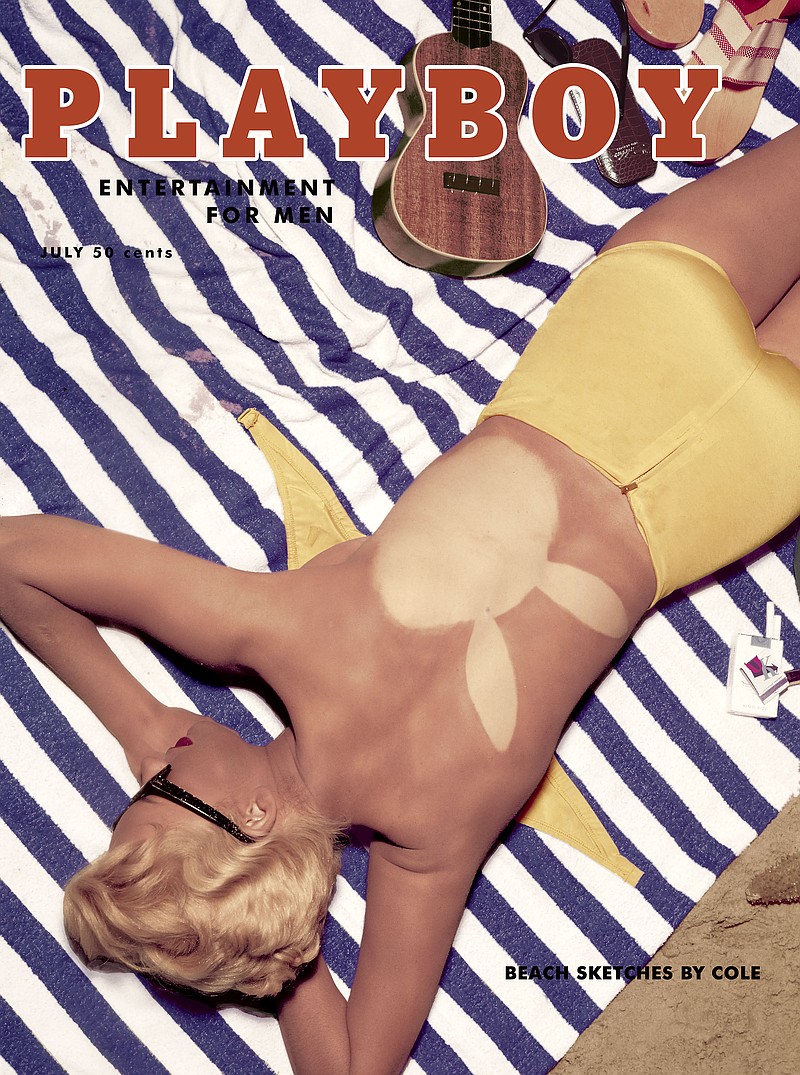LOS ANGELES (AP) - Six decades can change things. Playboy - once considered racy, even obscene - has become a benign and perhaps even stuffy icon of an era when sex was ... well, sexy.
With explicit Internet sex available in a nearly infinite variety, Playboy decided skin - no matter how gorgeously photographed - was no longer paying the bills. More than a year ago, it banned full nudity on its website, and on Tuesday announced it would do the same for its U.S. print edition.
Still, generations of men fondly remember Playboy as a rite of passage.
_____
Ken Williamson, 65, of Palmdale, California, remembers being busted around 1960 when he took a Playboy to class to read.
"I thought I could get away with it because I had a really big textbook," he said.
His teacher confiscated it, and he was given after-school detention. But when Williamson looked into class at lunchtime, "the teacher was at her desk reading it," he recalled.
The magazine offered far more than just naked women.
"It was the epitome of male sophistication," Williamson said. "This was in the era when (Hugh) Hefner was building the Playboy clubs. People joke that they only bought it for the articles, but they did have some interesting interviews."
Edwin Sierra, 59, of Los Angeles, remembers Playboy as his first introduction to female nudity. He hid the magazine in his room but "it wasn't sleazy at all," he said.
"It was kind of the celebration of a woman's body," he said. "And it's the first time seeing it exposed as a kid, you go 'Wow! Man!'"
Like the James Bond movies of the period, the magazine offered a glamorous view of a life full of voluptuous women, sophisticated clothing and fancy mansions, Sierra said.
"I learned a lot about (men's) fashion," he said. "It always stays with me a little bit."
Plus "they had great cartoons," he said.
Andrew Derkrikorian, 27, last looked at a Playboy magazine a decade ago.
"Even at that time, there was the Internet, so there was no reason to go out and buy it" because the news articles and stories about celebrities were all available online, not to mention porn.
So why did he buy it?
"The girls," he said. The models all appeared to be natural rather than cosmetically enhanced, shot in beautiful or intricate settings.
"They were classier," he said. "Besides just the nudity, there was a purpose behind every image."
"Compared to the girls in the photos today, that was art," he said. "A lot of the girls that pose for photos on social media are a lot more skanky."
Burlesque queen and Playboy cover girl Dita Von Teese agrees.
"I used to steal my dad's Playboys from underneath the bed, and it's where my obsession with garters and stockings comes from," she said in an email. "Those sumptuous, glamorized, lingerie-clad pinups are part of what snowballed my career from pinup girl to burlesque star to lingerie designer!"
__
Chris Weber in Los Angeles contributed to this article.
